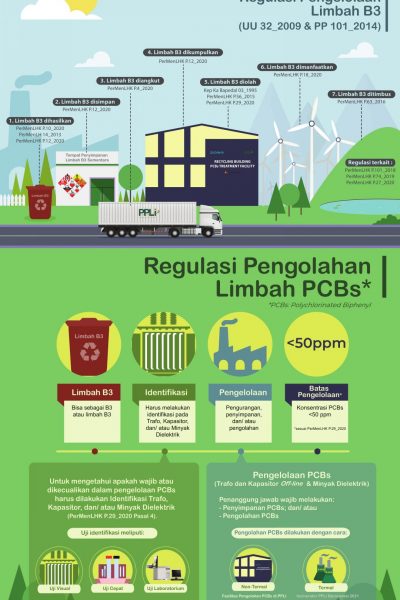

You should know
Are you familiar with Hazardous Waste Management Regulations?
Regulations related to the management of Hazardous Waste are regulated in Law Number 32 Year 2009 and Government Regulation Number 101 Year 2014. Hazardous Waste, is the residue of a business and/ or activity containing hazardous material. Hazardous waste management regulations include reduction, storage, collection, transportation, recycle, treatment and/ or landfill.
PCBs waste is also included in the category of hazardous waste according to the Regulation of the Minister of Environment and Forestry P.29 Year 2020 that Polychlorinated Biphenyls (PCBs) are hazardous and toxic substances which are aromatic hydrocarbons classified as organochlorines and are persistent with the classification prohibited from being used, and are still found on transformers, capacitors, and dielectric oil, so it is necessary to be treated, and concentration limit for PCBs management is less than 50 ppm (fifty parts per million) which is used as the basis for determining the management of PCBs in Dielectric Oil.
To find out the fulfillment of treatment provisions, identification includes visual tests, rapid tests and/ or laboratory tests on transformers, capacitors and/ or dielectric oil can be conducted. In the treatment of off-line transformers and capacitors as well as dielectric oil, it is mandatory to store and/ or process for PCBs. PT. Prasadha Pamunah Limbah Industri (PPLI) has a Non-Thermal facility for PCBs treatment as well as Thermal treatment (incineration) which will operate in 2021. See the regulations related to PCBs Waste Management in the infographic article.
How should PCBs waste be treated? Stay tuned for our next infographic. We will thoroughly examine how to treat PCBs waste at PPLI in detail. (atp)

